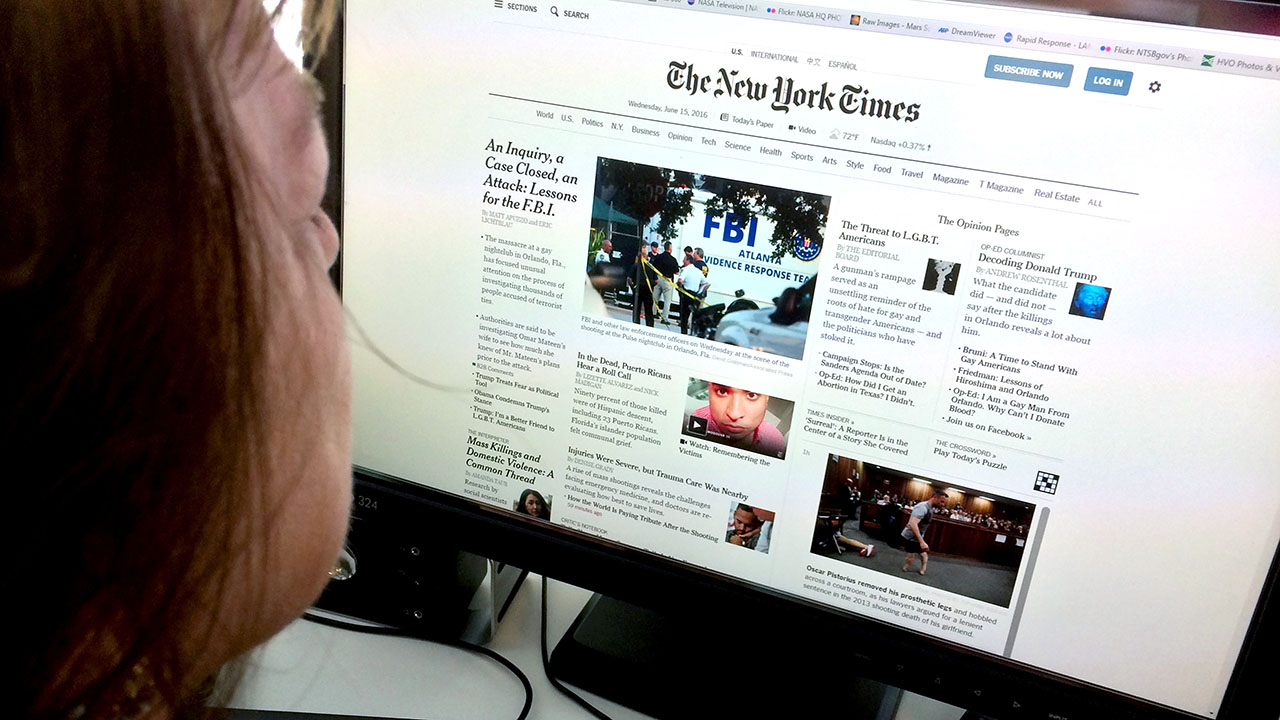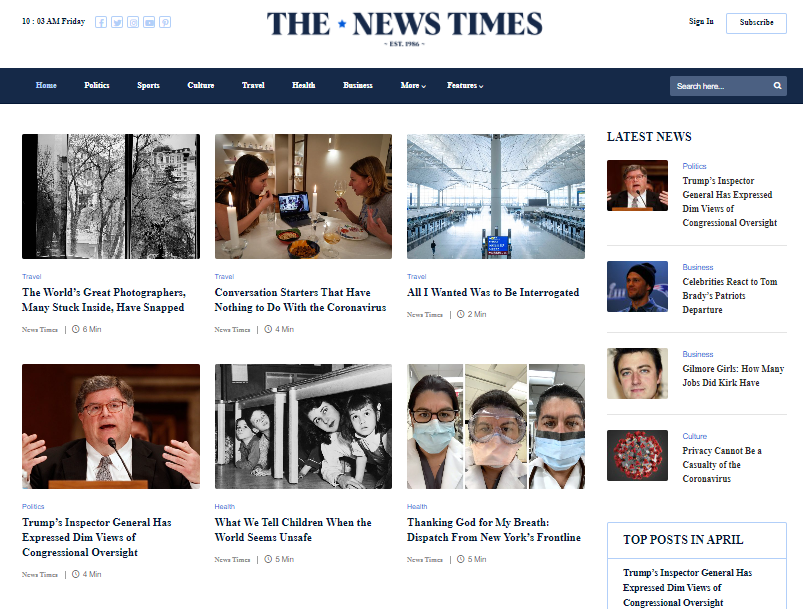The Influence of Social Media on the Means We Eat News Online
Social network has fundamentally transformed news consumption. It provides immediate accessibility to details, typically eclipsing typical media outlets. Nonetheless, this rapid circulation includes difficulties. Customers encounter the danger of running into false information and coming to be entraped in echo chambers. The algorithms driving personalized web content can cover diverse perspectives. As these dynamics progress, recognizing their implications becomes vital for notified engagement in public discourse. What methods might aid navigate this complex landscape?
The Development of News Usage in the Digital Age
As technology progressed, the means individuals consumed news changed considerably in the digital age (stnews.live). Typical papers and transmitted media began to decrease as the internet became a key resource of info. Online systems provided instant access to news posts, video clips, and podcasts, enabling individuals to stay notified at any moment. The comfort of smart phones even more accelerated this change, making it possible for customers to receive updates on the move
Additionally, the increase of news aggregators and websites helped with the consumption of diverse viewpoints, empowering customers to customize their news consumption based upon personal interests. This advancement also prompted wire service to adapt their strategies, concentrating on digital material and appealing visitors through multimedia styles. Therefore, the typical obstacles of time and room in news delivery decreased, leading to an extra immediate and tailored news experience for target markets worldwide.
The Duty of Social Media Platforms in News Circulation
Social media site systems have transformed news circulation by providing immediate access to information. Their algorithm-driven content curation typically focuses on involvement over precision, resulting in significant reliability challenges (stnews.live). As customers browse this landscape, the implications for news consumption and public discussion come to be increasingly complex
Instant News Accessibility
Traditional news electrical outlets have actually long been the primary source of information, the increase of social media systems has dramatically changed exactly how news is accessed and consumed. Instantaneous news accessibility has actually ended up being a characteristic of the electronic age, allowing users to obtain updates in genuine time. Platforms such as Twitter, Facebook, and Instagram permit news to spread quickly, frequently going beyond conventional media in speed and reach. Customers can share tales, remark on occasions, and involve with journalists, producing a vibrant interaction in between the audience and news web content. This immediacy promotes a culture of urgency, triggering users to seek info swiftly. The expectation for timely news has actually reshaped journalistic practices, compelling news companies to adapt their strategies to fulfill the needs of a fast-paced electronic setting.
Algorithm-Driven Content
While customers actively involve with web content on social media sites, the algorithms that govern these systems play a pivotal duty in establishing which news stories get visibility. These algorithms assess customer actions, choices, and involvement metrics to curate personalized news feeds. Because of this, certain tales might be amplified while others remain unknown, commonly focusing on sensational or trending topics over substantive coverage. This selective exposure forms customers' understandings of current occasions and influences public discourse. Furthermore, the dependence on algorithm-driven material can develop resemble chambers, where customers are mainly exposed to point of views that straighten with their own ideas. The dynamics of news circulation on social media platforms considerably impact just how people take in and translate details in the digital age.
Reliability Challenges
As individuals progressively transform to social networks for news, the reliability of info run into on these systems becomes a pressing concern. The decentralized nature of social networks allows any individual to release content, frequently blurring the lines between reputable journalism and false information. Formulas focus on involvement over precision, resulting in the prevalent dissemination of marvelous or deceptive stories. This setting presents considerable challenges for individuals trying to discern trustworthy sources. Social media systems, while endeavoring to fight misinformation through fact-checking and content small amounts, run the gauntlet for variances and biases in their methods. Ultimately, the responsibility lies with users to seriously review the news they eat, as the fast spread of information typically outpaces verification efforts by systems.
The Increase of Person Journalism and User-Generated Material
The surge of citizen journalism has actually empowered everyday people to share news and point of views, often providing understandings that typical media might forget. Nevertheless, this change likewise offers substantial challenges, particularly the spread of misinformation that can occur from unverified web content. As user-generated web content becomes more common, the balance in between genuine voices and precision in reporting stays a critical problem.
Encouraging Daily Voices

Difficulties of Misinformation
While the rise of resident journalism has actually opened methods for diverse voices in the media landscape, it has actually likewise presented considerable obstacles connected to false information. The ease of sharing information via social media sites systems enables people to disseminate news promptly, yet this rapid spread frequently comes at the cost of accuracy. User-generated web content regularly lacks the strenuous fact-checking and editorial oversight that standard journalism gives. Subsequently, sensationalized or incorrect narratives can gain grip, deceiving target markets and forming public understanding (stnews.live). The mixing of point of view and fact within social media complicates the distinction between reliable info and misinformation. As a result, consumers have to browse an increasingly complicated media environment, calling for essential assuming skills to determine dependable news sources in the middle of the noise

Misinformation and Its Ramifications for Public Discourse
As social networks systems significantly control the landscape of info dissemination, the spreading of false information presents considerable difficulties for public discussion. False information, often created to mislead or prompt psychological actions, can distort understandings of link reality and undermine count on legitimate sources. This sensation brings about polarized perspectives, as individuals gravitate in the direction of resemble chambers that strengthen their ideas, even more setting divisions within culture.
The implications for public discussion are extensive. When citizens rely on false information, significant dialogue decreases, and the democratic procedure endures. Misinformation can provoke fear and confusion, impacting public wellness, security, and political security. Therefore, cultivating media proficiency ends up being important, encouraging people to critically examine info and recognize reality from fiction. Addressing the difficulties positioned by misinformation is vital for protecting the integrity of public discourse and making sure an educated populace efficient in participating in constructive discussions.
The Impact of Formulas on News Exposure
Offered the main function of formulas in identifying content visibility, their influence on news intake is extensive. These formulas, made use of by social networks platforms, prioritize particular kinds of content based on user interaction and preferences. As an outcome, news write-ups that align with preferred trends or target market rate of interests are more likely to be shown prominently, while much less sensational tales might be overlooked. This creates an environment where customers are revealed largely to info that enhances their viewpoints, potentially causing echo chambers.
In addition, the constant development of algorithms means that wire service need to adjust their strategies to line up with these altering specifications, usually focusing on clickbait or emotionally billed headlines. The honesty of news reporting can be jeopardized, as vital tales may not obtain the exposure they are worthy of. The algorithmic shaping of news visibility consequently plays a necessary duty in influencing public assumption and understanding of present occasions.
The Shift Toward Visual Storytelling in News Media
Progressively, news media is welcoming visual narration as an effective device to engage audiences. This technique leverages pictures, video clips, infographics, and interactive aspects to share details a lot more properly than traditional text-based layouts. As interest extends shorten, visuals provide a fast, impactful method to communicate complicated tales and order visitors' passion.
Systems like Instagram and TikTok have additional accelerated this trend, engaging news companies to adapt their content approaches to fit these visually-driven environments. By incorporating engaging visuals, news outlets can enhance psychological connections and foster better understanding of topical issues.
Visual narration enables for more diverse narratives, showcasing multiple viewpoints via vibrant presentations. As audiences significantly eat news via mobile devices, the shift towards visuals not just accommodates user preferences however also helps to damage down barriers to information accessibility. Ultimately, this advancement mirrors a broader makeover in just how news is created and consumed in the digital age.
Future Patterns: Browsing the Transforming Landscape of News Consumption
While the electronic landscape remains to develop, news intake is positioned for substantial change driven by arising technologies and transforming audience habits. As synthetic knowledge my site and artificial intelligence development, customized news feeds will come to be extra prevalent, enabling individuals to receive content customized to their rate of interests. This customization could cause higher engagement yet additionally raise concerns concerning echo chambers and false information.
Furthermore, the increase of voice-activated tools and clever audio speakers will certainly influence exactly how news is provided, changing the focus from visual to acoustic formats. This trend may motivate wire service to take on even more succinct and appealing audio web content.

Frequently Asked Questions
How Do Social Media Communications Affect News Integrity?
Social network interactions can substantially affect understandings of news trustworthiness. Engagement metrics, such as sort and shares, commonly shape audience count on, over at this website with preferred posts obtaining regarded legitimacy, no matter of the accuracy or reliability of the information presented.
What Function Do Influencers Play in Shaping News Narratives?
Influencers greatly shape news narratives by leveraging their systems to intensify certain tales, frequently customizing web content to their target market. This can cause prejudiced perspectives, affecting public assumption and focusing on sensationalism over valid reporting.
Exactly How Can Users Identify Reliable News Sources on Social Media Site?
Customers can determine trustworthy news sources on social media sites by examining the source's trustworthiness, confirming facts with several outlets, evaluating the professionalism of the web content, and acknowledging potential prejudices in reporting to guarantee accurate details.
What Influence Does Social Network Carry Traditional Journalism Jobs?
Social media considerably influences standard journalism work by altering earnings versions, reducing need for print media, and fostering competitors from resident journalists. Lots of specialists deal with work insecurity and have to adjust to swiftly altering media landscapes.
How Do Various Demographics Consume News on Social Media?
Various demographics exhibit different preferences for news consumption on social media. Younger target markets prefer platforms like TikTok and Instagram for quick updates, while older people have a tendency to favor Facebook and Twitter for more extensive discussions and write-ups.